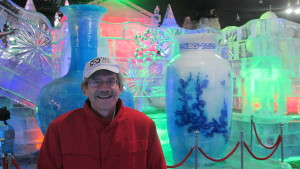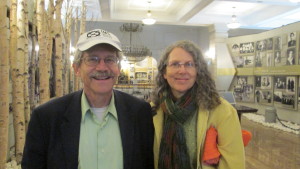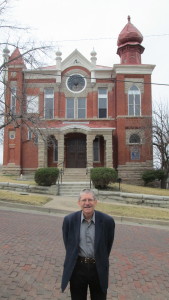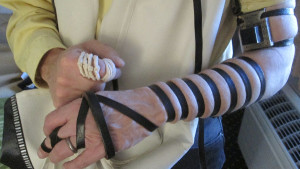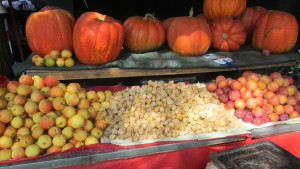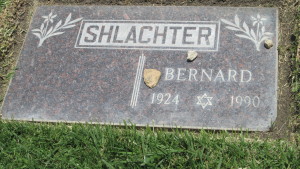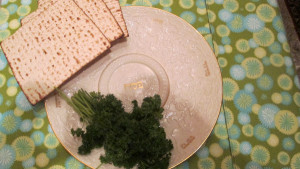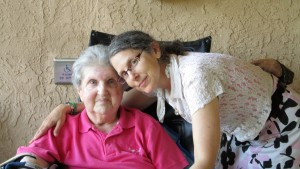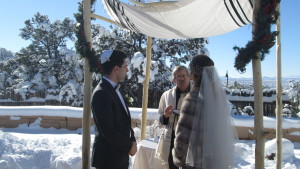
Recently I had to obtain a new badge at Los Alamos National Laboratory, my primary employer, to replace one that was expiring after its normal five years. The clerk reviewed various statistics that are coded onto the chip – height, weight, eye color. When she got to hair color, I was taken aback when she said “We’re going to change that ‘brown’ on the old badge to ‘gray.’” Then I read in The Wisdom of Solomon (4:9), one of the works in the collection of texts that didn’t quite make it into the Hebrew Bible (the Apocrypha), that “understanding is gray hair for men.” I guess the clerk was trying to say that I have achieved some level of understanding!
Among the things I believe I now understand is that for me, Judaism is designed to function in a (largely) non-Jewish world. For that reason, I was especially moved this past quarter by the continued support the Jewish community has received from non-Jews following the horrendous Pittsburgh shooting on October 27, 2018. Of course, it is my fervent hope that shootings never happen again; but when tragedy strikes, I hope I remember the debt we owe our neighbors. Their generosity, particularly to organizations like HIAS (formerly known as the Hebrew Immigrant Aid Society), has been wonderful.
This past quarter I delivered the sermon for the Unitarian Universalist congregation in Santa Fe and spoke about immigration from a Jewish perspective. I appealed to those present to donate to HIAS, and I was moved by the positive response. An expanded version of my sermon was the basis for my presentation in November at the New Mexico Jewish Historical Society’s annual meeting.
I also had the opportunity to present a well-honed talk on Jews at Los Alamos during the Manhattan Project both to the Placitas, NM Havurah and at a lunch-and-learn program at Temple Beth Shalom in Santa Fe. Leading and co-leading Friday evening and Saturday morning services both in Los Alamos and Santa Fe kept me quite busy, and these services allowed me to lead the congregation in blessing kids with the “Shabbat is Here” tune that I love so much from Kehillat Beijing. I also had the privilege of calling special friends up to the ark to lead a blessing on their 50th wedding anniversary.
Despite a series of snowstorms, Beverly’s hard work paid off with a wonderful turnout for a Friday night service and dinner which we sponsored in honor of our families, and we even held an Aufruf to celebrate the upcoming nuptials of a young couple. Arik and Maria were gracious enough to stand at the ark for many minutes while congregants showered them with sweets, and their reward was surprisingly warm weather two days later for an outdoor (!!!) wedding at which I officiated amidst a gorgeous, snowy Santa Fe background (see photo above). Worrying about how to conduct a ceremony in a (possible) snowstorm probably gained me some more gray hairs, but I now understand that miracles can indeed happen even today.
Below are titles of my reading list over the last quarter, with an asterisk indicating a particular favorite. I also was delighted to receive a copy of HaMakom congregant Dr. Joalie Davie’s new book entitled Healing the Power in You.
B’shalom,
Rabbi Jack
Only in America: The Open Society and Jewish Law – ed. Walter Jacob
Yehuda Halevi: Poetry and Pilgrimage – Joseph Yahalom
My Father’s Guitar and Other Imaginary Things* – Joseph Skibell
To the Heart of the Storm* – Will Eisner
The Eichmann Trial – Deborah Lipstadt
Lake Success – Gary Shteyngart
Popular Judaica Library – Germany – Stuart Cohen
Eternal Life – Dara Horn
The Blessing of a Skinned Knee – Wendy Mogel
The Orange Peel and Other Satires – S.Y. Agnon
Napoleon’s Influence on Jewish Law: The Sanhedrin of 1807 and Its Modern Consequences – ed. Walter Jacob and Moshe Zemer
The Day I Met Father Isaac at the Supermarket* –Jack Riemer
Illuminations: Essays and Reflections – Walter Benjamin
Moses and Monotheism – Sigmund Freud
The Algarrobos Quartet – Mario Goloboff
Levi’s Vindication: The 1007 Anonymous “as It Really Is” – Kenneth Stow
Between Life and Death* – Yoram Kaniuk
Warner Bros – David Thomson
Judgment – David Bergelson
How to Cure a Fanatic – Amos Oz
Out of the Ghetto – Jacob Katz

